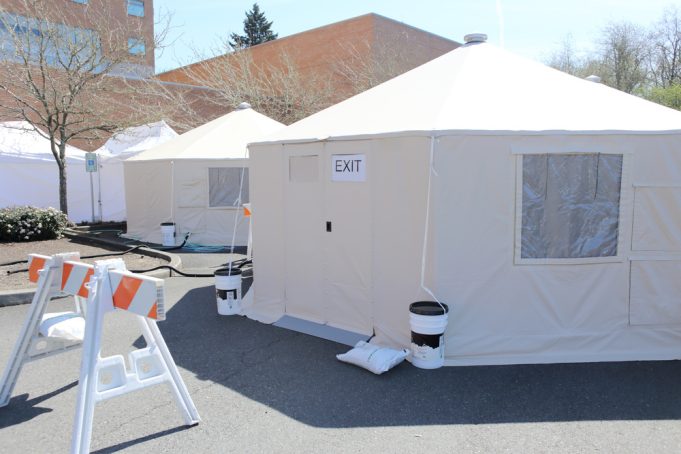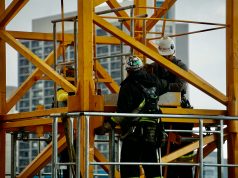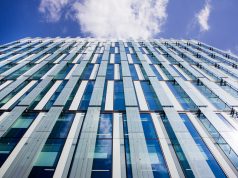Engineers and architects never stop creating effective solutions for industrial, commercial, and residential construction needs. They also develop new ways to lower costs without compromising durability and efficiency. One best example is the development of tension fabric structures.
Tension fabric structures are made with galvanized steel, aluminium, and weatherproof polyesters sealed with PVC films for extra waterproofing. Its architectural design and robust structural plan can withstand extreme weather conditions. Its strength makes it ideal for various uses and applications, such as the following:
- Warehouse
Fabric structures are a popular option for industrial and commercial warehouses. These large buildings are an effective solution for storing large stocks and bulky items, which is necessary for growing businesses.
Wide-span fabric storage structures are suitable for warehouses across different industries. Their designs allow proper maximization of horizontal and vertical space. You may use tall shelving and cantilever steel racks to organize your stock. Plus, you’ll have enough room for forklifts to make moving faster and more convenient.
- Portable Offices
Portable offices are necessary for immediate business expansion. They can be used for various industries like oil and gas, mining, public works, arctic research, and mineral exploration. Since most of these companies work in remote locations, they need temporary modular offices to keep their operations running.
Fabric structures are excellent for the quick construction of portable office spaces. You can conveniently ship the parts to the site and assemble them within a few days without additional foundation preparations.
- Workers’ Camps
Industries that operate in remote areas need to provide a safe camp for their employees. Fabric structures are durable and weatherproof, perfect for shelters amidst extreme weather conditions. They can withstand the scorching heat of deserts and freezing temperatures of northern and southern regions.
Fabric buildings for workers’ camps are properly-insulated. It’s also equipped with an energy-efficient HVAC system with specialized air filters to provide clean, safe, and healthy air for all employees. The insulation also helps maintain and regulate the temperature, so all the workers can sleep comfortably after a long day.
- Affordable Housing
The use of fabric buildings as homes has been present for centuries. Yurt living was a practice of early nomadic communities in the bronze age. However, this way of life regained popularity among modern-day nomads searching for affordable housing to free them from debt.
Modern fabric homes look like yurts but with better durability and strength. They can survive varying weather conditions without deterioration. You may also use solar energy to power your modern yurt to reduce expenses.
- Mobile Field Hospitals
The pandemic has exposed the need for additional mobile field hospitals to accommodate more patients. Having a modular option is convenient since they can be disassembled, stored, and used again when necessary.
Tension fabric structures are excellent for mobile field hospitals. They’re easy to install and suitable for a fast-paced environment. Furthermore, modular rooms can be added to improve emergency operations. Plus, hospitals can also use them for quarantine and testing.
The stability and durability of fabric buildings make them a conducive setting for treating patients despite lacking hospital rooms. These structures are also insulated to ensure the patients are comfortable and safe.
- Equipment And Vehicle Storage
Storing heavy equipment and vehicles need a highly durable and expansive space. Fabric buildings are suitable for this specific function due to their high tensile strength and clear-span design. It can span a width of 200 meters without posts that may obstruct movement in the interior.
Tension fabric buildings are popular as hangars. The wide-span architecture allows the smooth movement of planes and jets. The durable structure and weatherproof materials protect these vehicles during sandstorms or blizzards. Moreover, using these structures for equipment and vehicle storage is more economical than other building options.
- Event Venue
Fabric structures are ideal for event venues, especially for music festivals in open fields. The clear-span design is perfect for keeping an unobstructed view of the stage while maintaining the sound equipment safe from sudden rain.
The use of fabric structures for big events has become popular due to their flexibility. Some companies also offer rentals for short-term use. Unlike a typical tent, a fabric building looks more elegant and appropriate for corporate and formal occasions.
- Emergency Shelter
Emergency shelters are imperative when preparing for a disaster. When calamities come, and people need to evacuate their homes, disaster relief organizations provide a warm place to stay until it’s safe to return.
Fabric structures are suitable for building emergency shelters. These buildings can withstand hurricanes with minimal to no damage. Moreover, the high tensile strength created by the steel framing and tension fabric prevents it from collapsing amidst an earthquake.
Conclusion
Tension fabric structures are high-quality multifunctional buildings. They’re suitable for various industries, whether industrial, commercial, or residential. With continuous innovations in engineering, you can expect improvements in this type of construction for more uses and applications.














